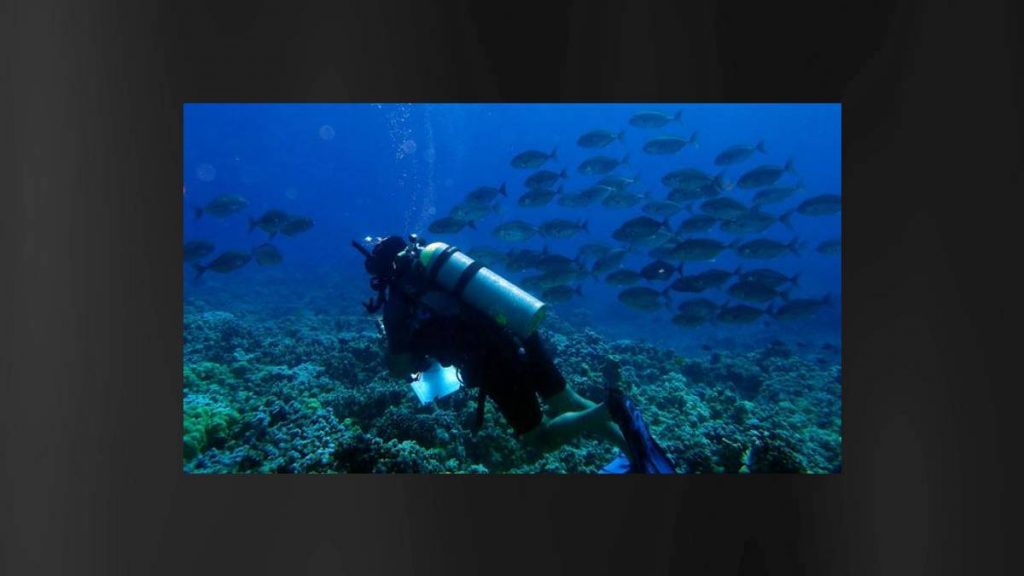Molokini reef fish increased during COVID-19 tourism drop

During August 2019, more than 40,000 tourists visited Hawaiʻi’s Molokini island—off of Maui’s southwestern coast—to snorkel or dive. In March 2020 the COVID-19 pandemic dropped that number to zero.
The sudden and prolonged drop in visitors to one of the world’s most popular snorkeling spots provided scientists with a novel opportunity to study how underwater tourism impacts marine fishes. The results of the scientists’ study have now been published in PLOS ONE.
“The COVID-related tourism freeze provided a unique natural experiment to measure the effects of decreased tourism on fish behavior in a high-use, no-take marine protected area,” said the study’s lead author, Kevin Weng of William & Mary’s Virginia Institute of Marine Science.
Co-authors on the study include Alan Friedlander and Whitney Goodell of the National Geographic Society, who are both affiliated with the University of Hawaiʻi at Mānoa, and Laura Gajdzik and Russell Sparks of Hawaiʻi’s State Department of Land and Natural Resources.
Overall, the team’s findings suggest that “Molokini is being overused, and that management is needed to improve not only ecosystem health but the visitor experience,” said Sparks.
Community structure refers to the type and numbers of species present in an ecosystem. During Hawaiʻi’s COVID-19 lockdown—which began at full force in March 2020 and was then slowly lifted until visitation returned to pre-pandemic levels in May 2021—the researchers conducted scuba surveys on five separate occasions to record the species, abundance, size and location of predatory and herbivorous fishes within Molokini’s submerged crater.
They also tracked the movement of the predatory species using electronic tags. Comparing these observations with data from similar surveys conducted in the years before and after the lockdown allowed them to detect differences in fish community structure caused by human presence. The researchers gathered data on human presence using log books kept by the 40 charter boat companies permitted to bring tourists into Molokini’s waters.
“When tourism shut down due to COVID, species that had been displaced from shallow habitats by high human presence moved back in on a timescale of months, increasing fish biomass as well as the proportion of larger predators,” said Friedlander, a researcher at the Hawaiʻi Institute of Marine Biology.
The species that mainly drove the observed increase in lockdown biomass were fast-swimming predatory fishes known as jacks, which learn to fear humans as they are often targeted by fishermen. When tourism resumed, “the predators moved to deeper waters, so fish biomass and habitat use dropped to pre-pandemic levels.” Biomass is a combined measure of fish abundance and size.
These predators were quickly displaced from this shallow-water habitat when tourism resumed. Their displacement is particularly concerning because their summertime spawning season overlaps with the annual peak in marine tourism.

The human-induced displacement of predatory fishes from Molokini’s crater likely sends ripples throughout the local food web.
“Predators have diverse ecosystem roles, and their loss can reduce the resistance and resilience of ecosystems to other stressors,” said Friedlander.
“Our findings indicate that the business-as-usual conditions of high tourism alter community structure by displacing predatory fishes to deeper environments,” said Weng.
Molokini, which lies about three miles west of Makena, Maui, was designated as a “no-take” marine protected area in 1977 based on tour operators’ concerns regarding the impacts of fishing and other “consumptive” uses.
“The tour operators have always been interested in the conservation of Molokini, and have worked with the State on several measures,” said Sparks.
As the volume of “non-consumptive” uses such as snorkeling and scuba diving increased, tour operators worked with the state to establish a limited-entry permit system for tour boats (1987) and an anchoring ban in parallel with installation of permanent moorings (1995) to protect corals.
“Our study indicates that the intensity of non-consumptive uses, especially in heavily visited MPAs (marine protected areas), should be considered for the long-term health and resilience of these ecosystems,” said Weng. “Management of tourism should be guided by biological research, and include clear and well-enforced rules, adaptive management and broad stakeholder involvement.”



